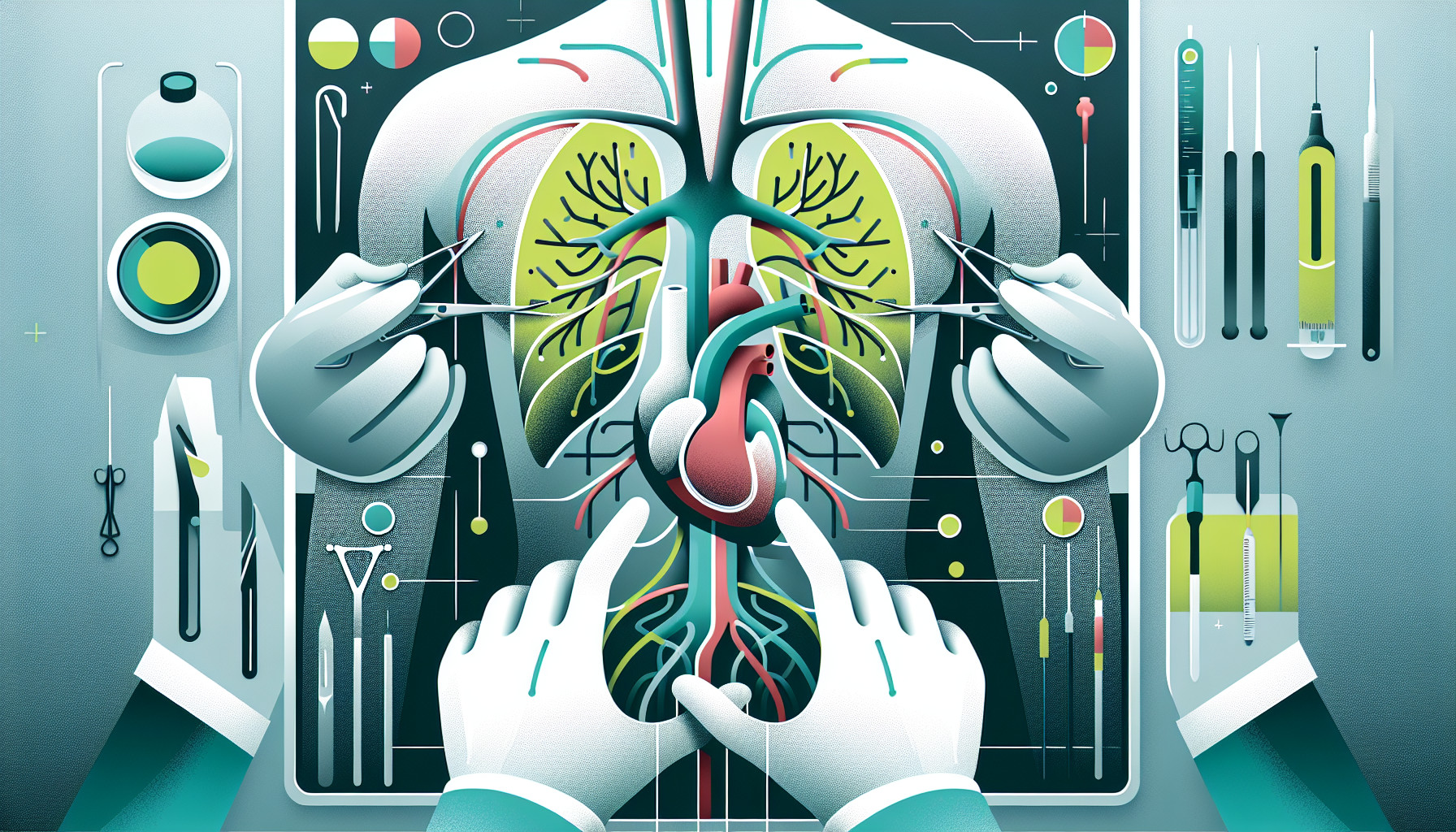Our Summary
The research paper discusses a rare case where an abdominal aortic aneurysm (AAA), a dangerous swelling in the main blood vessel that leads away from the heart, ruptures in a kidney transplant patient. Treating this emergency is very tricky as doctors have to fix the aorta without causing damage to the transplanted kidney during the procedure. The researchers discuss a variety of protective measures for the kidney that have been suggested in the past.
In this specific case, the patient had a functioning kidney transplant and a rupture near the kidney. The doctors built a temporary bypass outside the body to keep blood flowing to the kidney during surgery. They couldn’t use a less invasive procedure (EVAR) because the patient’s aorta was too short. After the operation, the patient had complications including poor blood flow to the colon and infection in the aorta. However, three years later, the patient was healthy and the transplanted kidney was working well.
The paper emphasizes that doctors need to consider protecting the transplanted kidney when a AAA rupture happens in kidney transplant patients. The authors also looked at other reported cases and how they were treated.
FAQs
- What is the primary challenge in treating a ruptured abdominal aortic aneurysm (AAA) in a kidney transplant patient?
- What measures can be taken to protect the renal graft during aortic repair?
- What complications did the patient experience during the postoperative period after their AAA repair?
Doctor’s Tip
A doctor might tell a patient undergoing aortic aneurysm repair to discuss with their medical team the best method to protect their kidney function during the procedure. This could include measures such as temporary shunts, renal cold perfusion, or general hypothermia to minimize ischemic damage to the renal graft during aortic cross-clamping. It is important to communicate openly with your healthcare providers to ensure the best possible outcome for both the aortic repair and kidney function.
Suitable For
Patients who are typically recommended aortic aneurysm repair include those with large or rapidly expanding aneurysms, those with symptoms such as abdominal or back pain, those with a family history of aortic aneurysms, and those with risk factors such as smoking, high blood pressure, or atherosclerosis. In the case of kidney transplant patients, special consideration must be given to preserving renal graft function during aortic repair. In such cases, measures such as temporary shunts, renal cold perfusion, and general hypothermia may be employed to protect the renal allograft during surgery. EVAR may not be an option in cases where the anatomy of the aortic neck is not suitable for endovascular repair. Overall, individualized treatment plans should be developed based on the patient’s specific clinical situation and the expertise of the medical team.
Timeline
Before aortic aneurysm repair:
- Patient may experience symptoms such as abdominal or back pain, pulsating sensation in the abdomen, or other signs of aortic aneurysm
- Diagnosis is typically made through imaging studies such as ultrasound, CT scan, or MRI
- Patient may undergo medical management to control blood pressure and prevent rupture
- Surgical intervention is planned if the aneurysm is at risk of rupture
After aortic aneurysm repair:
- Patient undergoes open surgical repair or endovascular repair, depending on the location and size of the aneurysm
- In this case report, a temporary extra-corporeal axillofemoral shunt was used to maintain perfusion of the renal allograft during open surgical repair
- Postoperative period may be complicated by ischemic damage to surrounding organs, infection, or other complications
- Long-term follow-up is required to monitor for graft function and overall patient well-being
Overall, a patient with an aortic aneurysm may experience a range of symptoms and management strategies before undergoing repair, and the postoperative period may involve careful monitoring and management of potential complications.
What to Ask Your Doctor
- What are the risks and benefits of surgical repair versus endovascular repair for my aortic aneurysm?
- Will my kidney transplant be at risk during the repair process, and what measures will be taken to protect it?
- What is your experience and success rate in treating aortic aneurysms in kidney transplant patients?
- What is the expected recovery time and potential complications following the repair of my aortic aneurysm?
- Will I need to make any changes to my current medication regimen before or after the surgery?
- How often will I need follow-up appointments and imaging studies to monitor the repaired aortic aneurysm?
- Are there any lifestyle changes or restrictions that I will need to adhere to in order to prevent future complications with my aortic aneurysm?
Reference
Authors: Veiga C, Veterano C, Sá-Pinto P, Teixeira S, Silva I, Vaz C, Almeida R. Journal: Ann Vasc Surg. 2022 Feb;79:438.e1-438.e6. doi: 10.1016/j.avsg.2021.07.035. Epub 2021 Oct 10. PMID: 34644655
